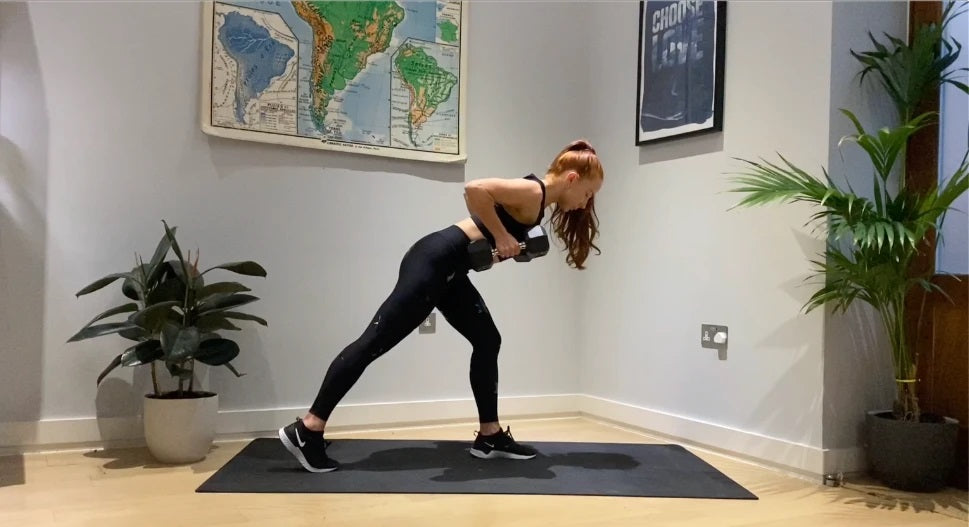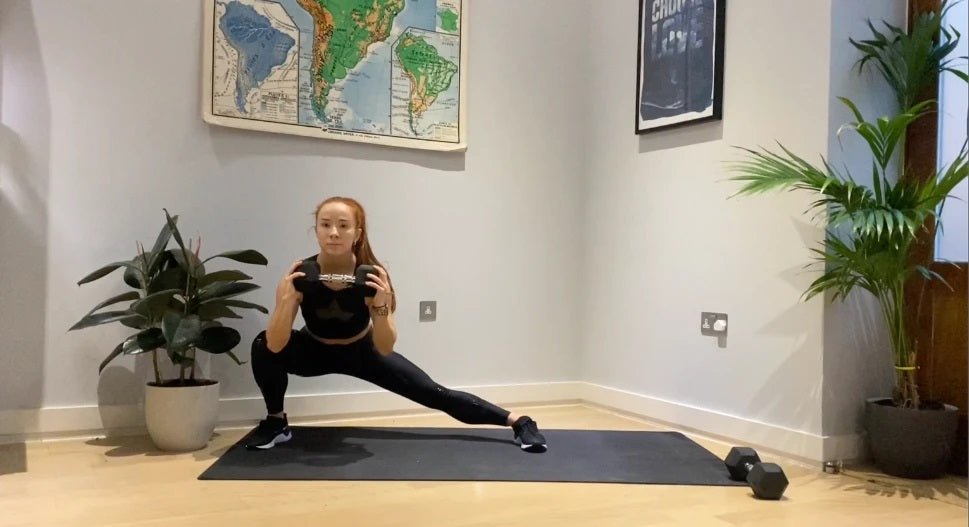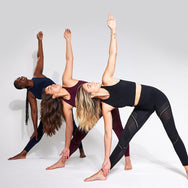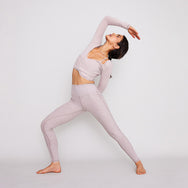Words by Gede Foster

Everybody’s routines have been turned upside down during the pandemic. The great thing is people have got more creative, with gyms being closed, more people have been working out in their homes, getting creative with their space, following virtual workouts. If someone asked you about home workouts a year ago, the first things that might have crossed your minds were the likes of Mr Motivator, Jane Fonda, but now the mentality seems to have completely shifted. As a nation we are realising home workouts can be super efficient. You can still get a super tough workout with minimal equipment without the travel time, without an expensive gym membership.
We can get a super efficient HIIT workout, pilates, barre, sculpting classes but the challenge has been maintaining strength.
It has been a growing concern from fitness lovers about losing strength without access to their gyms. It is true, without the barbells and access to heaving weights it becomes challenging but not impossible. There are some simple adaptations that you can make to how you execute your exercises to maximise on strength maintenance, and that is what this blog is going to delve into.
TUT TECHNIQUES
If you are concerned about losing muscle and strength and are normally used to lifting heavier loads in the gym, grab yourself some medium dumbbells for your home gym. Adapt your workouts by increasing TUT (Time Under Tension). This promotes hypertrophy. The recommended amount of time under tension for hypertrophy (muscle growth) is 30-70 seconds so if you were performing 10 reps of a bicep curl picking it up for 1 sec, 1 sec at the top, 1 sec to release you would spend 30 secs under muscular tension. If you extended it to 2 seconds to curl, 1 sec at the top, 3 secs to lower for the same 10 reps you would spend 60 seconds under tension demand twice as much from your muscles. This TUT principle can be applied to the majority of your lifts. (All except olympic lifts).
With this type of training we focus on slowing the eccentric phase of the movement. The eccentric phase is when the muscle is extending, the lengthening phase. So in the above example of the bicep curl it is the lowering phase as the bicep re-lengthens out.
Eccentric loading comes into a lot of athlete’s strength programs because of the benefits that affect strength, power and injury prevention.
Eccentric muscle contractions under load demand 20-60% more muscular force than concentric contractions (shortening phase) which heightens neuromuscular activation levels.

Compound movements
A compound movement is an exercise that uses multiple muscles and multiple joints to perform. For example a squat uses the hip and the knee joints, uses your glutes, quads, hamstrings, and core. As opposed to an isolated movement that only uses one joint and one muscle group like a biceps curl.
Compound movements demand more from your body therefore you are using more energy and calories to perform, making compound movements better ‘bang for your buck’ exercises if you are looking to get the most out of your at home training sessions.
Maximise your full ROM
Also consider that the greater range of motion you have the more depth you will get in all your lifts, the more you get out of the exercises. Complimenting your training with some mobility work can really enhance the quality of your work so you can get the most out of it.
OK, TIME TO PUT IT TO PRACTICE!
The next few videos give a breakdown of an ideal full workout you can do from home to help you maintain strength with just one set of medium dumbbells. You want to pick a weight that you can bicep curl with as that will be the hardest move with the weight selection.
Workout 1:
3 exercises. 3 rounds. 1 min rest between rounds.
- Glute bridge
10-12 reps. Up in 1 count. Hold for 2 counts. Lower in 3 counts.
- Front rack Squat
10-12 reps. Lower in 3 counts. Hold for 1 count. Up in 1-2 counts.
- Deadlift.
10-12 reps. Lower in 3 counts. Hold for 1 count. Up in 1-2 counts.
Workout 2:
3 exercises. 3 rounds. 1 min rest between rounds.
- Reverse Lunges
10-12 reps.
- RDL
10-12 reps each side. Lower in 3 counts. Hold for 1 count. Up in 1-2 counts.
- Cossack squat to Halo.
10-12 reps each side.
Workout 3:
3 exercises. 3 rounds. 1 min rest between rounds.
-
Single arm Overhead Press
10-12 reps each arm. Push up in 1. Hold for 1 count. Lower for 3 counts. Opposite arm is in an isometric hold (under constant muscular tension).
-
"L" Raise
10-12 reps. Lift up for 1count. Hold for 1 count. Lower for 3 counts.
- Bent Over Row
10-12 reps. Row in 1 count. Hold for 2 counts. Lower for 3 counts.
Workout 4:
3 exercises. 3 rounds. 1 min rest between rounds.
-
Push Up
10-12 reps. Lower in 3 counts. Push up in 1 count.
-
Single arm Bicep Curl with twist.
10-12 reps each arm. Curl up in 1 count. Lower in 3 counts, Opposite arm is in an isometric hold (under constant muscular tension).
-
Bent Over Fly
10-12 reps. Fly in 1 count. Hold 1 count. Lower in 3 counts.
Finisher:
This finisher is a ‘Chipper.’ because we gradually chip away at the time.
3 exercises: Thrusters / DB swings / Standing burpee.
Round 1: 1 min each exercise. No rest between exercises
Rest 20 secs.
Round 2: 45 secs each exercise. No rest between exercises
Rest 20 secs.
Round 3: 30 secs each exercise. No rest between exercises
CONCLUSION
Hopefully with this guide you'll find building strength from home is more approachable than you might think! Give these workouts a try and enjoy the efficiency of being able to get a great workout from home. Remember, it's not a race! Time under tension and technique are always better than speedy reps.






























































